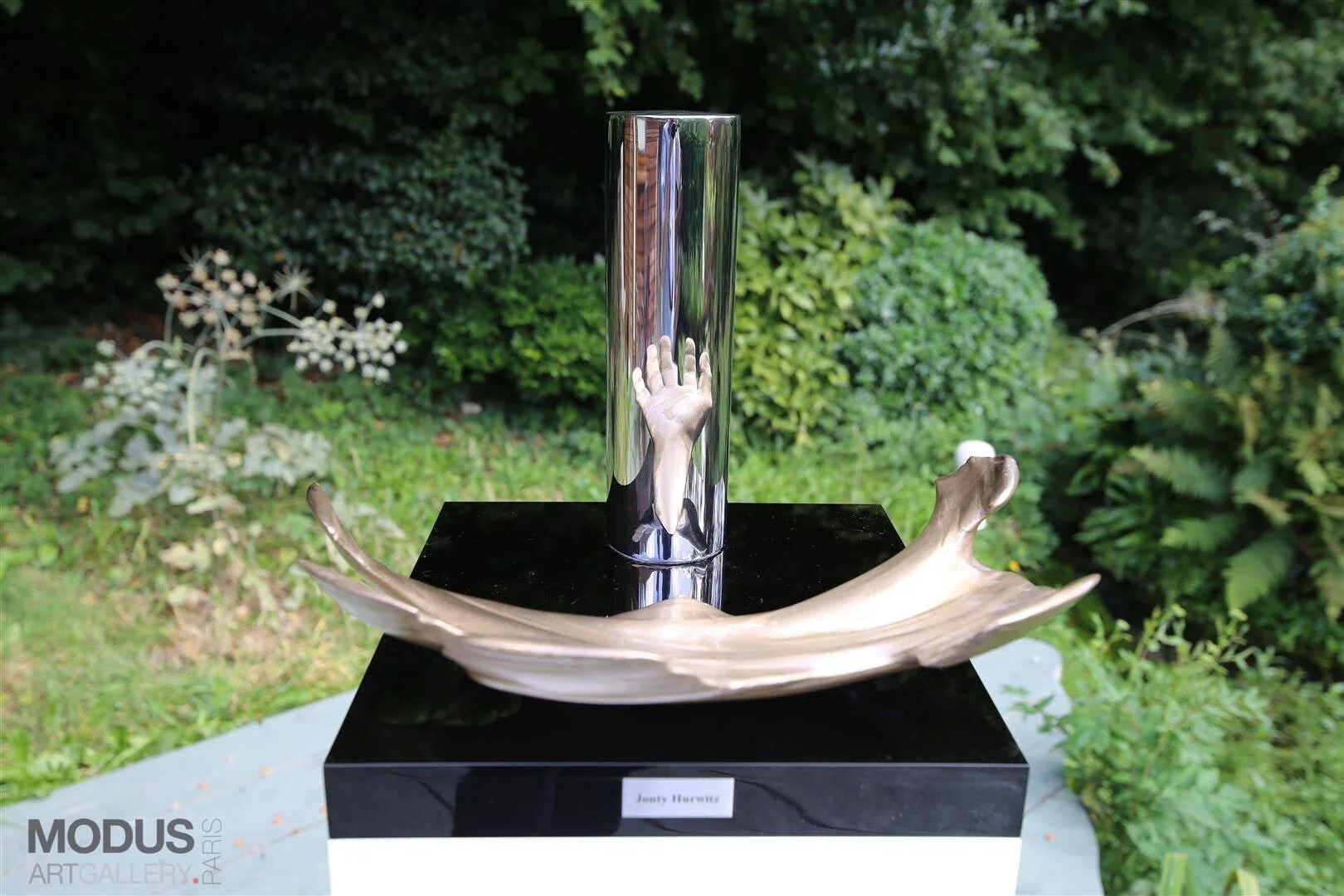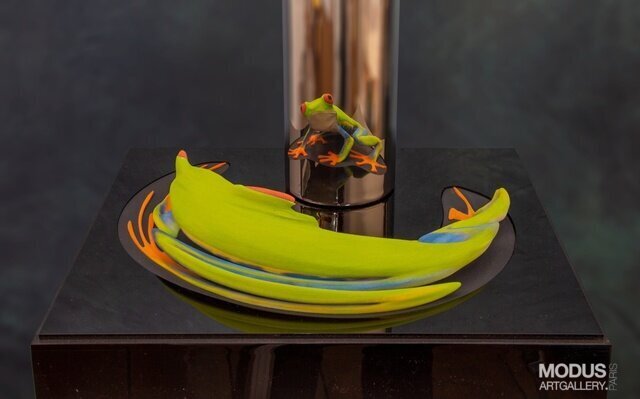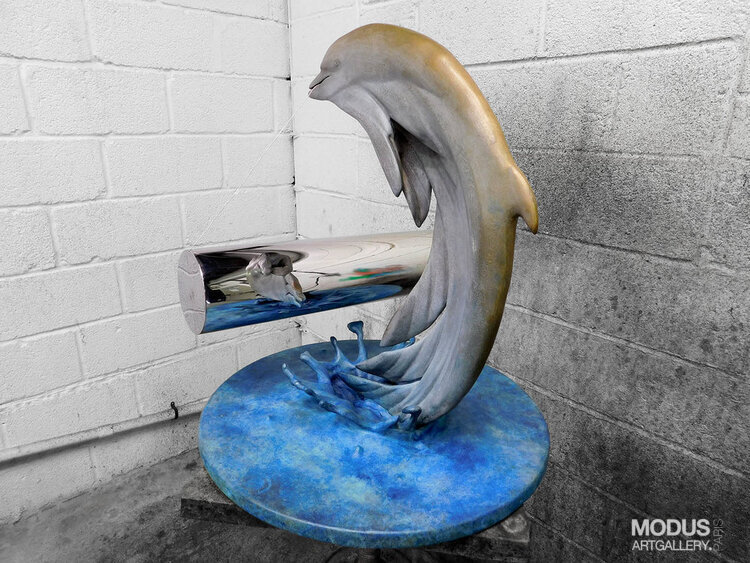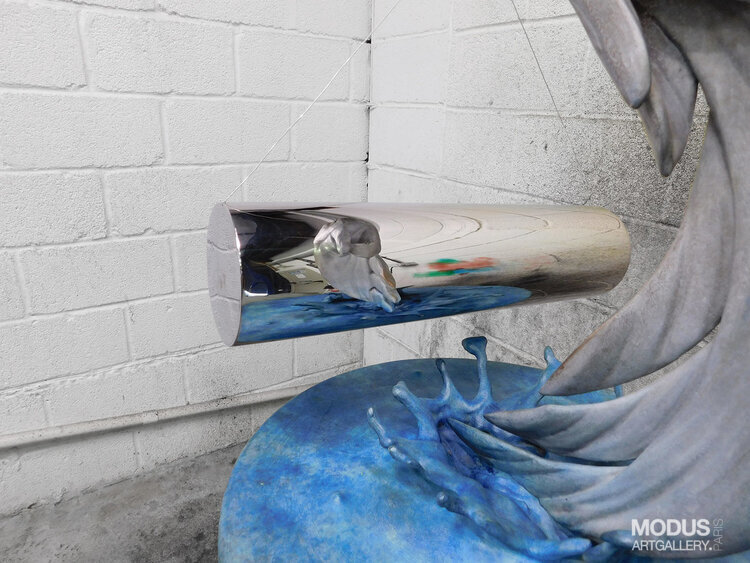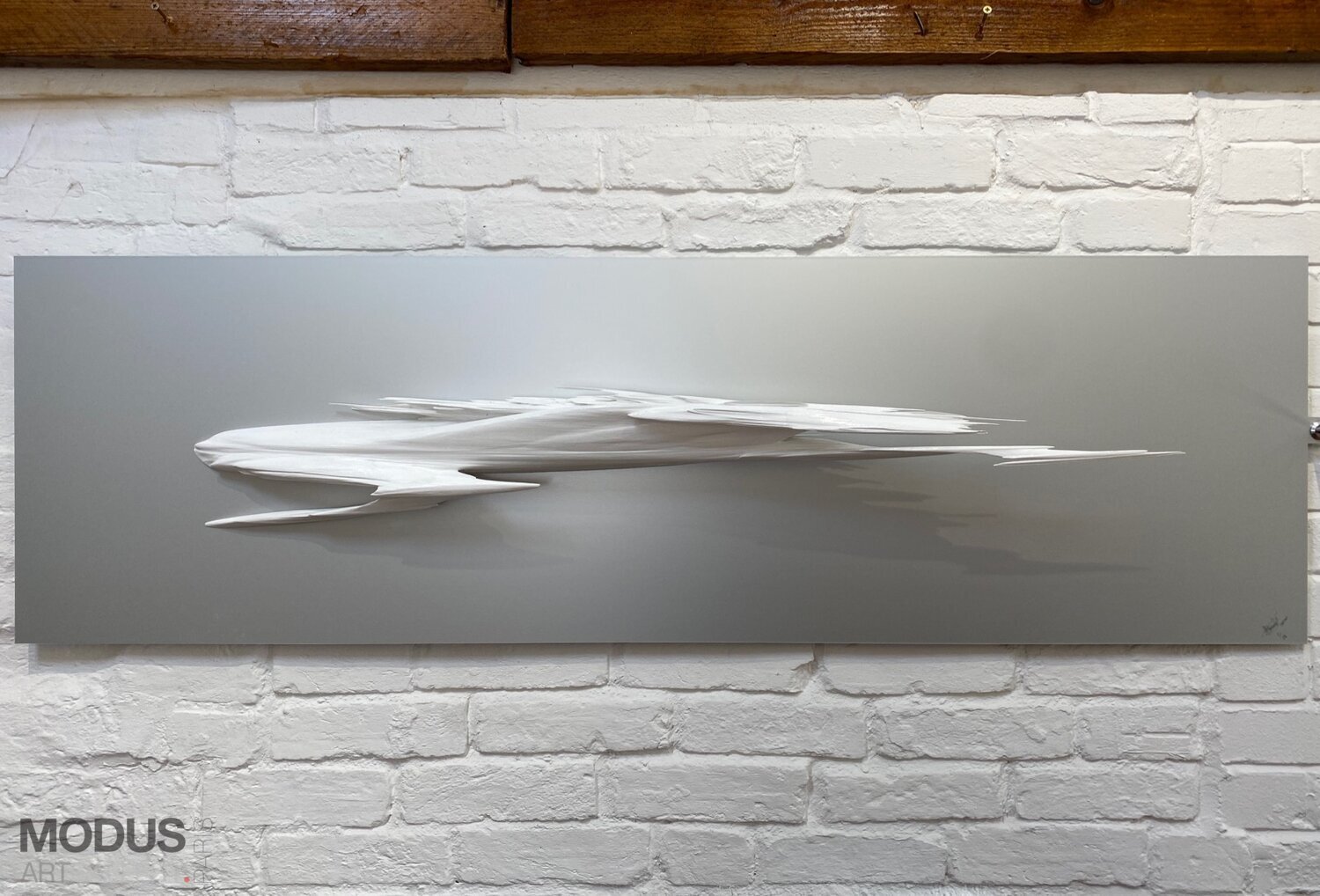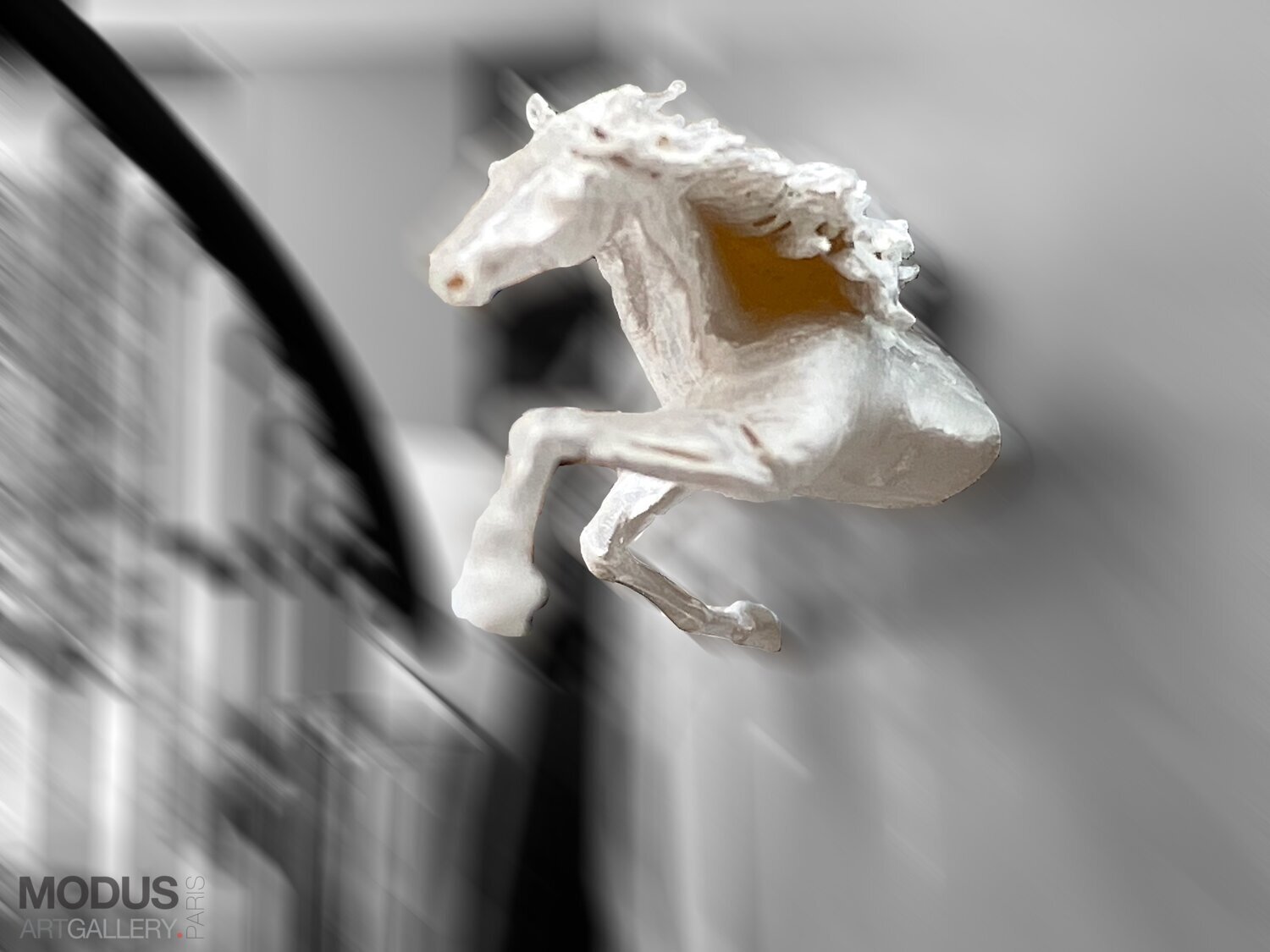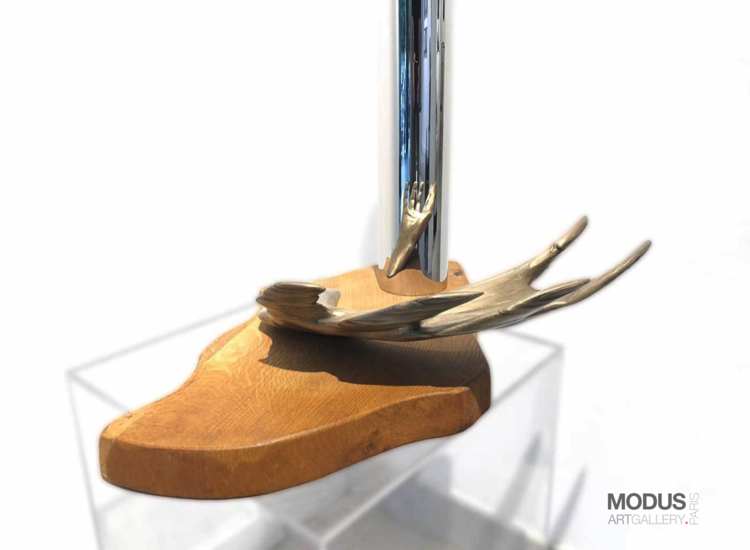Group Show
ALBEN • ANDRE NADAL • BANKSY • BEN VAUTIER • BRUNO CATALANO • DAMIEN HIRST • DOMINIQUE RAYOU • DYLAN MARTINEZ • FABIEN NOVARINO • GULLY • HUANG YULONG • HUGE • ILHWA KIM • JOE SUZUKI • JONTY HURWITZ • JOSHUA JENSEN-NAGLE • JESUS CURIA • KURAR • MR.BRAINWASH • NUNO VIEGAS • PIPSQUEAK WAS HERE • RENAUD DELORME • RENE MAKELA • ROAMCOUCH • SAKE STC • SENY • SNIK • STIKKI PEACHES • PIMAX • WALTER STRACK
JONTY HURWITZ
About:
In a 2015 documentary by CNN International on Hurwitz's artwork, BBC Radio 2 art critic Estelle Lovatt explained Hurwitz's work as follows: "If Leonardo Da Vinci were alive today, he would have been doing what Jonty is doing. He would have been using algorithms. No one else works like him today. His art is the mix between the emotional and the intelligent, and that's what gives it that spark."
Hurwitz's work focuses on the aesthetics of art in the context of human perception. His early body of sculpture was discovered by Estelle Lovatt during 2011 in an article for Art of England Magazine: "Thinning the divide gap between art and science, Hurwitz is cognisant of the two being holistically co-joined in the same way as we are naturally, comfortably split between our spiritual and operational self".
Until late 2008 Hurwitz had never produced any sculpture. In 2009 his first sculpture 'Yoda and the Anamorph' won the People’s Choice award in the Maidstone Museum and Art Gallery Bentliff Prize. Later in 2009 he won the Noble Sculpture Prize and was commissioned to install his first large scale work (a nude study of his father called 'Dietro di me') in the Italian medieval village Colletta di Castelbianco. In 2010 he was selected as a finalist for the 4th International Arte Laguna Prize in Venice, Italy.
In January 2013 Hurwitz's anamorphic work was discovered by the art blogger Christopher Jobson and within days of being posted had gone viral on the internet. In a short documentary about Hurwitz's "Generation Pi" philosophy by Vera Productions it is estimated that the sculpture received 20 million views online in the space of a few weeks.
“Finding that line between art and science is the underlying motivator in my art life.” These words belong to London-based sculptor Jonty Hurwitz, who used 3D scanning and the power of π to create stunning anamorphic sculptures that can be seen in cylindrical reflections.Complexity, study and trying stood at the base of these incredible modern sculptures, while perspective and curiosity shaped something out of the ordinary.
Metallic cylinders mirror stretched sculptures whose shapes are only seen from a certain perspective. What seems to be melted copper is showcased in the metal cylinder as a grasping hand in the work called “Rejuvenation”, while another piece reveals a frog in the mirror. Some pieces display pieces that become whole when looked at from a specific vantage point, expressing the need to be in the right place. If you’d like to see one of the pieces, the artist has one on display in the De Medicis Gallery, Place des Vosges.
À PROPOS:
Mélangeant art et science dans ses oeuvres, il est le seul artiste à utiliser l'anamorphose dans la sculpture, créant des œuvres à la fois uniques et originales. Il est aussi connu pour avoir créé les plus petites formes humaines à l'aide de la nano technologie.
Dans un documentaire de 2015 pour la CNN International dédié à l’œuvre d’Hurwitz, la critique d’art Estelle Lovatt décrit le travail d’Hurwitz en ces termes : « Si Leonard de Vinci était encore vivant aujourd’hui , il aurait fait ce que Jonty fait aujourd’hui. Il aurait utilisé des algorythmes. Aucun artiste ne travaille comme lui aujourd’hui. Son art est à la fois réfléchi et sensible, c’est ce qu’il lui donne sa singularité.
Le travail d’ Hurwitz se concentre sur l’écart entre l’art et la science, en effet, l’artiste est conscient que ces deux notions sont étroitement liées, de la même manière que le corps et l’esprit auxquels il fait référence dans ses œuvres.
En 2009, sa première sculpture « Yoda et L’Anamorphe » a remporté le People’s Choice Award au Maidstone Museum. En 2010, il a été sélectionné comme finaliste du 4ème Prix International Arte Laguna à Venise.
Son travail a été découvert en 2013 par le blogueur d’art Christopher Jobson, ce qui lui a permis de se faire connaitre du grand public.
BRUNO CATALANO • JUAN MIGUEL PALACIOS • JOSHUA JENSEN-NAGLE • ISABELLE SCHELTJENS • JESUS CURIA • PIMAX • BANKSY • SNIK • STIKKI PEACHES • KURAR • JONTY HURWITZ • MIGUEL VALLINAS • PIPSQUEAK WAS HERE • DYLAN MARTINEZ • WALTER STRACK • ANDRE NADAL • RENAUD DELORME • BRAM REIJNDERS • ILHWA KIM • HUGE • YEHIEL ATTIAS


